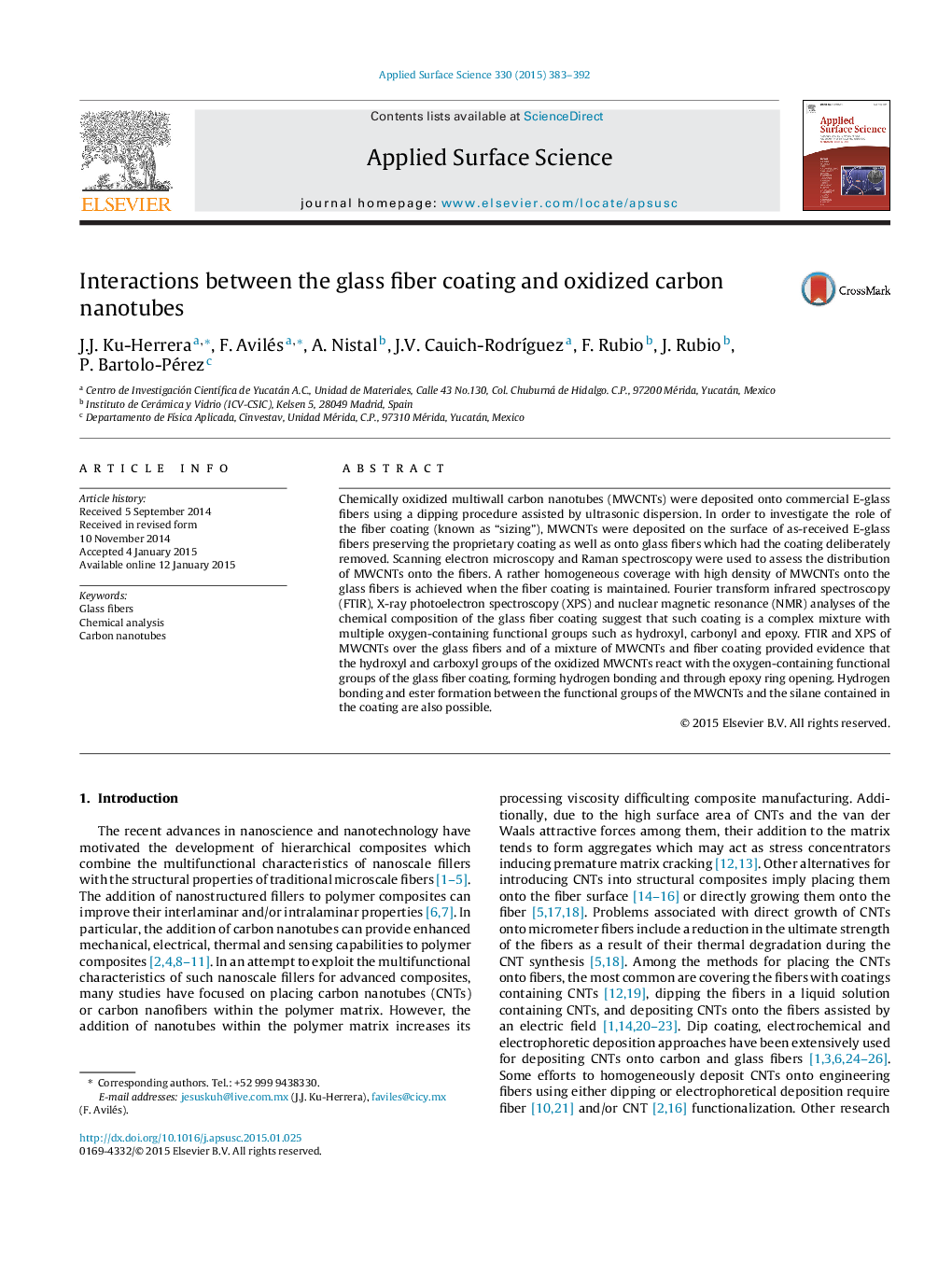| کد مقاله | کد نشریه | سال انتشار | مقاله انگلیسی | نسخه تمام متن |
|---|---|---|---|---|
| 5348723 | 1503634 | 2015 | 10 صفحه PDF | دانلود رایگان |
- Oxidized multiwall carbon nanotubes (MWCNTs) were deposited onto E-glass fibers.
- The role of the fiber coating on the deposition of MWCNTs on the fibers is studied.
- A rather homogeneous deposition of MWCNTs is achieved if the coating is maintained.
- Multiple oxygen-containing groups were found in the analysis of the fiber coating.
- Evidence of chemical interaction between MWCNTs and the fiber coating was found.
Chemically oxidized multiwall carbon nanotubes (MWCNTs) were deposited onto commercial E-glass fibers using a dipping procedure assisted by ultrasonic dispersion. In order to investigate the role of the fiber coating (known as “sizing”), MWCNTs were deposited on the surface of as-received E-glass fibers preserving the proprietary coating as well as onto glass fibers which had the coating deliberately removed. Scanning electron microscopy and Raman spectroscopy were used to assess the distribution of MWCNTs onto the fibers. A rather homogeneous coverage with high density of MWCNTs onto the glass fibers is achieved when the fiber coating is maintained. Fourier transform infrared spectroscopy (FTIR), X-ray photoelectron spectroscopy (XPS) and nuclear magnetic resonance (NMR) analyses of the chemical composition of the glass fiber coating suggest that such coating is a complex mixture with multiple oxygen-containing functional groups such as hydroxyl, carbonyl and epoxy. FTIR and XPS of MWCNTs over the glass fibers and of a mixture of MWCNTs and fiber coating provided evidence that the hydroxyl and carboxyl groups of the oxidized MWCNTs react with the oxygen-containing functional groups of the glass fiber coating, forming hydrogen bonding and through epoxy ring opening. Hydrogen bonding and ester formation between the functional groups of the MWCNTs and the silane contained in the coating are also possible.
304
Journal: Applied Surface Science - Volume 330, 1 March 2015, Pages 383-392
